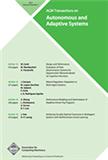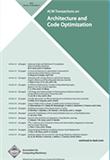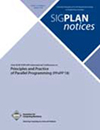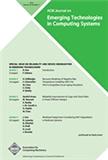IET Signal Processing
SCI/SCIE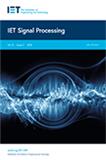
- 雜志名稱:IET信號處理
- 簡稱:IET SIGNAL PROCESS
- 期刊ISSN:1751-9675
- 大類研究方向:工程技術(shù)
- 影響因子:1.754
- 數(shù)據(jù)庫類型:SCI/SCIE
- 是否OA:No
- 出版地:ENGLAND
- 年文章數(shù):133
- 小類研究方向:工程技術(shù)-工程:電子與電氣
- 審稿速度:約9.0個(gè)月
- 平均錄用比例:容易
官方網(wǎng)站:http://www.ietdl.org/IET-SPR
投稿網(wǎng)址:http://mc.manuscriptcentral.com/iet-spr
IET Signal Processing
英文簡介IET Signal Processing publishes research on a diverse range of signal processing and machine learning topics, covering a variety of applications, disciplines, modalities, and techniques in detection, estimation, inference, and classification problems. The research published includes advances in algorithm design for the analysis of single and high-multi-dimensional data, sparsity, linear and non-linear systems, recursive and non-recursive digital filters and multi-rate filter banks, as well a range of topics that span from sensor array processing, deep convolutional neural network based approaches to the application of chaos theory, and far more.Topics covered by scope include, but are not limited to:advances in single and multi-dimensional filter design and implementationlinear and nonlinear, fixed and adaptive digital filters and multirate filter banksstatistical signal processing techniques and analysisclassical, parametric and higher order spectral analysissignal transformation and compression techniques, including time-frequency analysissystem modelling and adaptive identification techniquesmachine learning based approaches to signal processingBayesian methods for signal processing, including Monte-Carlo Markov-chain and particle filtering techniquestheory and application of blind and semi-blind signal separation techniquessignal processing techniques for analysis, enhancement, coding, synthesis and recognition of speech signalsdirection-finding and beamforming techniques for audio and electromagnetic signalsanalysis techniques for biomedical signalsbaseband signal processing techniques for transmission and reception of communication signalssignal processing techniques for data hiding and audio watermarkingsparse signal processing and compressive sensing
IET Signal Processing
中文簡介IET信號處理發(fā)布了關(guān)于各種信號處理和機(jī)器學(xué)習(xí)主題的研究,涵蓋了檢測、估計(jì)、推理和分類問題中的各種應(yīng)用、學(xué)科、模式和技術(shù)。發(fā)表的研究包括單維和高維數(shù)據(jù)分析的算法設(shè)計(jì)、稀疏性、線性和非線性系統(tǒng)、遞歸和非遞歸數(shù)字濾波器和多速率濾波器組,以及從傳感器陣列處理、基于深度卷積神經(jīng)網(wǎng)絡(luò)的方法等一系列主題。對混沌理論的應(yīng)用,還有更多。范圍涉及的主題包括但不限于:單、多維濾波器設(shè)計(jì)與實(shí)現(xiàn)進(jìn)展線性和非線性、固定和自適應(yīng)數(shù)字濾波器和多速率濾波器組統(tǒng)計(jì)信號處理技術(shù)與分析經(jīng)典、參數(shù)和高階譜分析信號轉(zhuǎn)換和壓縮技術(shù),包括時(shí)頻分析系統(tǒng)建模與自適應(yīng)識別技術(shù)基于機(jī)器學(xué)習(xí)的信號處理方法信號處理的貝葉斯方法,包括蒙特卡羅馬爾可夫鏈和粒子濾波技術(shù)盲半盲信號分離技術(shù)的理論與應(yīng)用語音信號分析、增強(qiáng)、編碼、合成和識別的信號處理技術(shù)音頻和電磁信號的定向和波束形成技術(shù)生物醫(yī)學(xué)信號分析技術(shù)通信信號傳輸和接收的基帶信號處理技術(shù)數(shù)據(jù)隱藏和音頻水印的信號處理技術(shù)稀疏信號處理與壓縮傳感
精選同類領(lǐng)域期刊,熱門推薦輕松get~
-
- ACM Transactions on Autonomous and Adaptive Systems
- 期刊ISSN:1556-4665
- 大類研究方向:工程技術(shù)
- 影響因子:
- 數(shù)據(jù)庫類型:SCIE
- 咨詢投稿
-
- ACM Transactions on Architecture and Code Optimization
- 期刊ISSN:1544-3566
- 大類研究方向:工程技術(shù)
- 影響因子:1.444
- 數(shù)據(jù)庫類型:SCIE
- 咨詢投稿
-
- ACM Transactions on Applied Perception
- 期刊ISSN:1544-3558
- 大類研究方向:工程技術(shù)
- 影響因子:
- 數(shù)據(jù)庫類型:SCIE
- 咨詢投稿
-
- ACM Transactions on Algorithms
- 期刊ISSN:1549-6325
- 大類研究方向:工程技術(shù)
- 影響因子:
- 數(shù)據(jù)庫類型:SCIE
- 咨詢投稿
-
- ACM SIGPLAN NOTICES
- 期刊ISSN:0362-1340
- 大類研究方向:工程技術(shù)
- 影響因子:
- 數(shù)據(jù)庫類型:
- 咨詢投稿
-
- ACM Journal on Emerging Technologies in Computing Systems
- 期刊ISSN:1550-4832
- 大類研究方向:工程技術(shù)
- 影響因子:2.013
- 數(shù)據(jù)庫類型:SCIE
- 咨詢投稿
精選常見問題,答疑解惑輕松get~
- 三篇ssci論文怎么同時(shí)投出去
- 中文核心和sci哪個(gè)影響力更大
- 中科院一區(qū)和JCR一區(qū)期刊占比區(qū)別
- 發(fā)ssci如何快速找合適的期刊
- 資源保護(hù)方面論文投sci指導(dǎo)
- 外貿(mào)行業(yè)論文發(fā)ssci周期長嗎
- 國外的sci投到錄用一般多久
- ssci期刊國內(nèi)認(rèn)可度
- 核能應(yīng)用論文翻譯英文發(fā)sci容易的方法
- 人口老齡化研究論文符合ssci領(lǐng)域嗎
- sci開源和不開源分別是什么意思?有什么影響?
- ssci發(fā)表是高水平學(xué)術(shù)論文嗎
- 生態(tài)修復(fù)主題英文論文會收錄哪些數(shù)據(jù)庫
- 哲學(xué)專業(yè)論文發(fā)英文期刊
- 中科院sci四個(gè)區(qū)的劃分
- ssci期刊和sci期刊的區(qū)別
- ESCI和SCIE要分清
- ssci送審論文多久出結(jié)果
- ssci論文二作有用嗎
- 水土保持類英文期刊好選嗎
- ssci期刊論文一定會檢索嗎
 投稿咨詢
投稿咨詢

